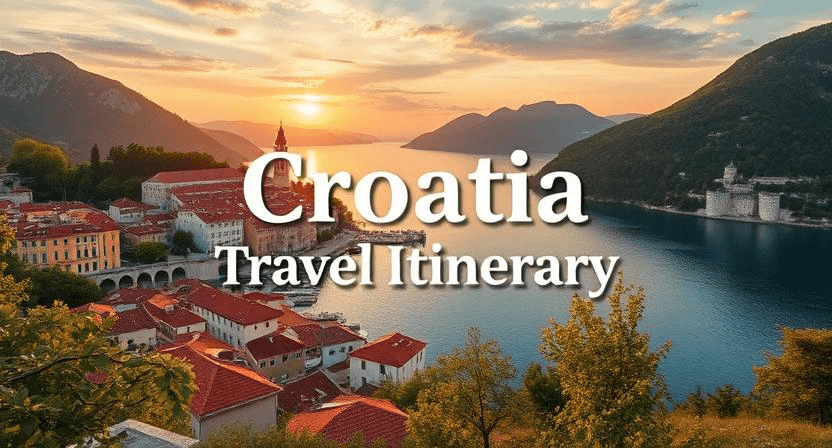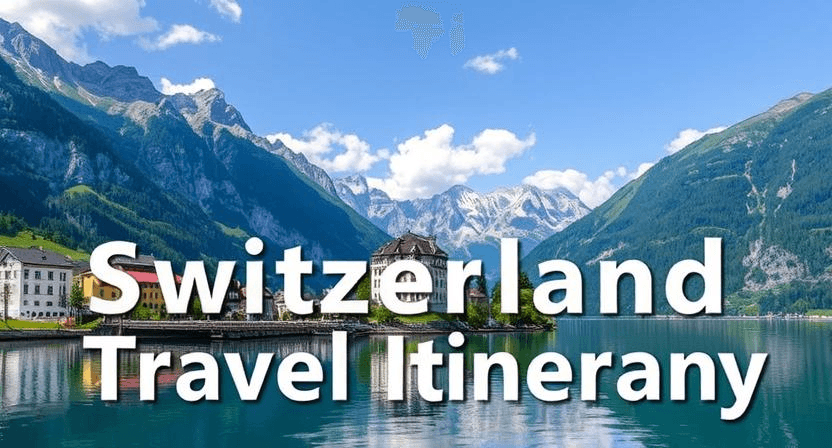Croatia Travel Itinerary really is an incredible country, with gorgeous beaches, amazing history, and absolute natural beauty. For Americans looking to go deeper in Europe with a country that mixes medieval cities, dreamy islands, and a lively culture, Croatia is a must. Whether your journey takes you to historical landmarks, scenic landscapes, or the tranquility of the Mediterranean, this 10-day itinerary will lead you through the highlights of what Croatia has to offer.
Day 1-2 Explore Dubrovnik, the Pearl of the Adriatic

Read more: Why Dubrovnik is the most iconic destination in Croatia. Dubrovnik, the “Pearl of the Adriatic,” is one of the most iconic destinations in Croatia. Rich history, well-preserved architecture, and dramatic coastline make it the perfect place to kick off your Croatian adventure.
Arriving and Getting Settled in Dubrovnik
When you arrive at Dubrovnik’s Cilipi Airport, there are a few options for getting into the city. Taxis or shuttles are the easiest way into the city center, but there are public buses, too. Dubrovnik’s Old Town is pedestrian-only, so it’s easy to explore on foot.
Old Town UNESCO World Heritage Site
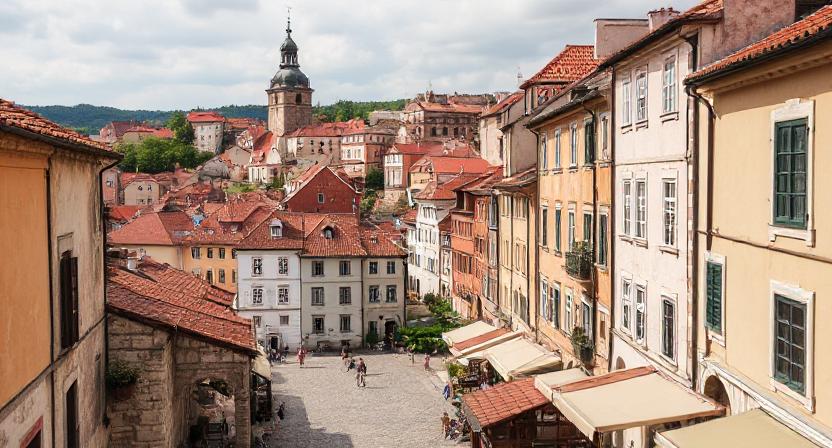
The highlight of Dubrovnik is its Old Town, where cobbled streets are packed with history. The walls that surround the city, from the 10th century, are probably its best-known feature. Forget about visiting it from the ground, the City Walls offer a unique perspective of the city. This 1.2-mile trail provides wide-angle views of the terracotta rooftops, the glimmering Adriatic Sea, and the surrounding islands.
Exploring Historical Landmarks
As you stroll through the Old Town, make sure to pop into the Rector’s Palace, a stunning Gothic-Renaissance structure that once served as the home of the city’s rulers. Also worth visiting is Sponza Palace, which is a fine example of Dubrovnik’s mix of Gothic and Renaissance architecture. Be sure to see the Cathedral of the Assumption, which holds some of the most significant religious relics in Croatia.
Dining with a View

There are many restaurants in Dubrovnik, and you can find some with beautiful sea views. Try the local food at one of the seafood restaurants on the beach. Fresh fish, risottos with seafood, and Croatian wines are the staples here. Stop by Lokanda Peskarija for fresh seafood along the Old Port with the perfect view.
Even as an American citizen, do I need a visa to enter Croatia?
U.S. citizens do not require a visa to enter Croatia for the purposes of tourism or business for stays of up to 90 days within 180 days. It remains vital that you hold a passport that is valid for at least three months beyond your intended departure date. If you intend to stay longer, you will need to apply for an extension or a long-stay visa.
Day 3-4: Split – The Romans are Back in Town
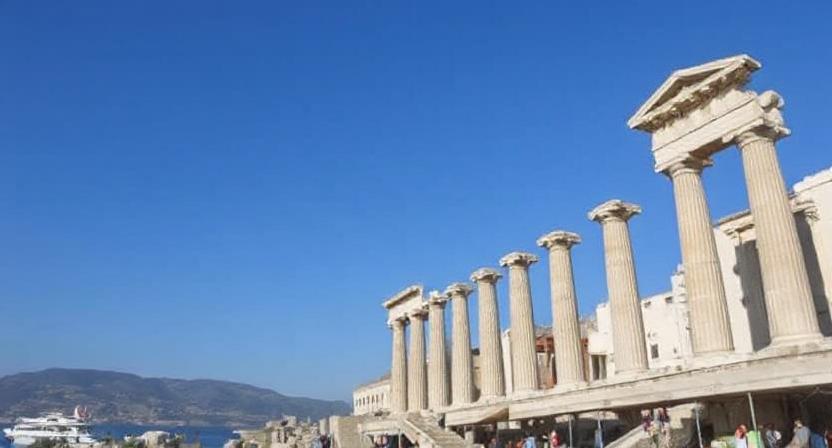
Split, the second-largest city in Croatia, is a harmonious mix of history and modernity. In addition to being one of the world’s greatest repositories of Roman ruins, it has a flashy, modern vibe and a busy waterfront.
Arrival and City Exploration
From Dubrovnik, the gorgeous drive up the coast to Split will take around 4 hours and offers great views over the Adriatic Sea. When you reach Split, head to the rain-flagged Diocletian’s Palace, a vast Roman compound constructed by Emperor Diocletian in the 4th century and a UNESCO World Heritage site.
The Diocletian’s Palace
Split’s Diocletian’s Palace is probably the most famous historical site in Split, but it isn’t just a historic site; but is a living part of the city, as it is situated in the heart of the city. Today, there are several restaurants, shops, and apartments. Don’t forget to visit the Peristyle, the palace’s main courtyard, which is beautiful for photographing. We also visited the Temple of Jupiter and the Cathedral of Saint Domnius, which was once Diocletian’s mausoleum.
a twirling tower image Exploring the Colorful Streets of Split

After visiting the palace, continue to the Riva Promenade, the lively waterfront, either palm tree-lined, member cafes and restaurants. The promenade makes a great perch for sipping a drink, people-watching, or just taking in the harbor view. For something more local, head to Pazar Market, which sells fresh produce, meats, and local products.
Hiking Marjan Hill for the Views
Just outside the city center, Marjan Hill, a natural park, has a little climb worth the effort for its views of Split and the islands beyond. A hike to the hilltop offers stunning views of the coastline and the glistening waters of the Adriatic. You will also find a few old chapels on the hill, which add historic charm to the place.
5th Day (Day 5): Plitvice Lakes National Park – Paradise of Nature
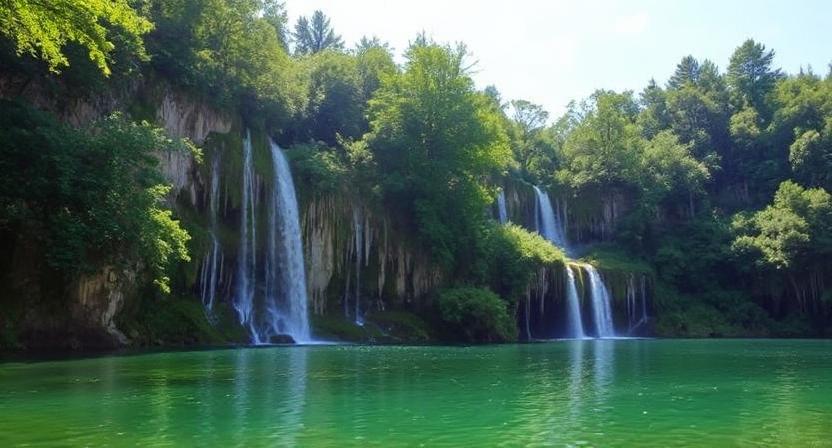
No visit to Croatia would be complete without seeing its natural beauty, and a trip to Plitvice Lakes National Park, one of Europe’s most amazing natural sites. Famed for its cascading waterfalls and stunning turquoise lakes, this UNESCO World Heritage Site is an absolute must-do for any nature lover.
Exploring Plitvice Lakes
Plitvice Lakes is a series of 16 crystalline lakes connected by more than 90 waterfalls. There are many walking and wooden paths in the park, allowing visitors to experience its unspoiled beauty at their own pace. The most famous waterfall, Veliki Slap, the highest in Croatia, plunges dramatically 78 meters.
The Scenic Trails
Depending on how much time you have, there are a variety of routes to explore inside the park. It’s possible to select from 2 to 6 hours of grading so that you may extract a stroll that suits your needs.. The park also harbors rich flora and fauna, and while rare, wildlife such as bears, deer, and wolves can sometimes be spotted.
A Peaceful Escape
Plitvice is not just about waterfalls, but also about the tranquil mood of its forested surroundings. Visitors are welcome to take boat rides across the lakes or simply sit back and enjoy the tranquility of the park. A full day is spent away from the crowds of Croatian cities.
What currency is used in Croatia?
The currency of Croatia (HRK) is the Croatian kuna. Though many businesses — particularly in tourist areas — will accept euros, it’s advisable to have kuna for smaller establishments. You will find plenty of ATMs, and credit cards are widely accepted.
Day 6-7: Zadar – Exploring Past and Present
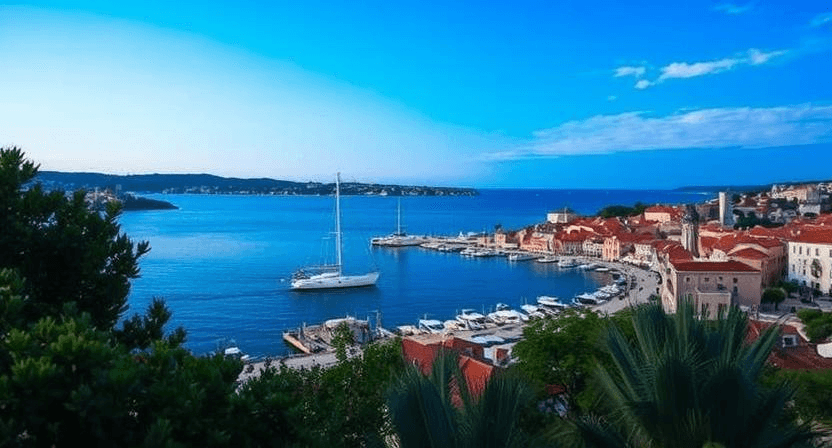
The fifth largest city in Croatia is situated on the splendid Dalmatia coast and is known for ancient Roman ruins, medieval architecture, and incredible public art installations. What it does have, and what makes it special, is a mix of the old and the new.
Roman and Medieval Heritage
The Old Town of Zadar, which dates back to antiquity, with landmarks such as the Roman Forum, built in the 1st century B.C., is the center of this small city. One of the most important examples of early Byzantine architecture in Croatia is the St. Donatus Church, a ninth-century structure. For more history, check out the Zadar Archaeological Museum, which has artifacts from Roman, medieval, and Renaissance-era eras.
Sea Organ and Greeting to the Sun
Some of Zadar’s most popular attractions are its art installations. But a sea-powered musical instrument on the waterfront — The Sea Organ — was a great introduction. When the waves draw close, the organ emits a bizarre, calming voice. Also in the vicinity, the Greeting to the Sun — a large solar-panel installation that comes to life in vibrant colors at night — provides an awe-inspiring display that honors the power of nature.
A Relaxing Day by the Sea
After visiting the historical and artistic sights of Zadar, relax at Kolovare Beach, a short walk from the Old Town. The beach, a local favorite, has shallow, clear waters. Or, to find world-class beaches without the crowds, take a boat trip to the islands of Ugljan or Pašman, which are just off the coast.
Can I travel to Croatia, and is it safe?
Yes, Croatia is one of the safest countries to travel to in Europe. Violent crime is uncommon, and many visitors have a trouble-free visit. But like any destination, it’s wise to exercise standard precautions, like being aware of your surroundings, keeping valuables close, and obeying local laws and customs.
Day 8-10: Hvar – The Island of Sun and Sea
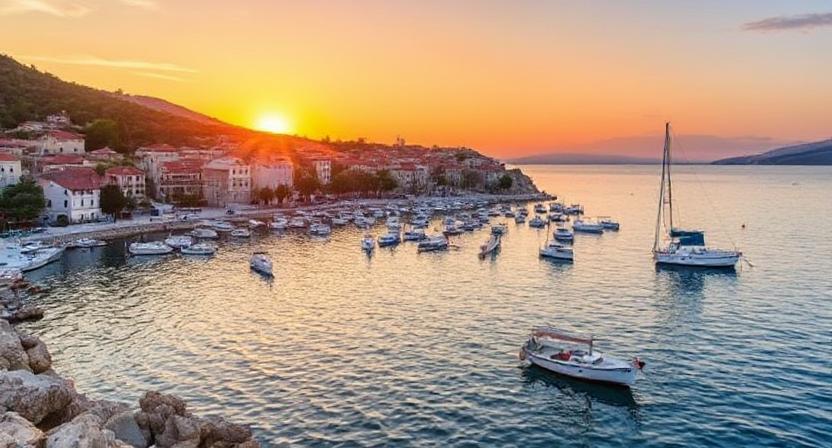
In Hvar, one of the most scenic islands in the Adriatic, your Croatian journey ends. This area is known for its beautiful beaches, vibrant nightlife, and beautiful old town.
Exploring Hvar Town
The island’s central town, Hvar Town, is a medieval port with narrow stone streets, stunning Renaissance architecture, and an active marina. Head to Fortica Fortress for panoramic views of the town and nearby islands. The town also has St. Stephen’s Square, one of the largest public squares in Dalmatia, framed by historic buildings and cafes.
Relaxing on the Beaches
Hvar is best known for its idyllic beaches, many of which can be reached by boat or a short hike. Dubovica Beach is a quiet, pebbly beach, perfect for swimming and sunbathing. If you’re seeking a more secluded location, try the Pakleni Islands, a collection of small islets where you can spend a day swimming, snorkeling, or just relaxing by the water.
Vibrant Nightlife
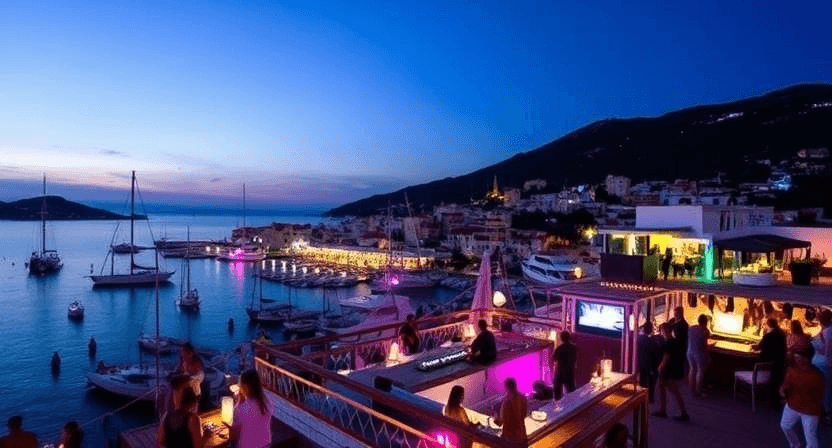
Hvar has one of the most famous party scenes in the world. The town has a large selection of bars and nightclubs for cocktails and music. One of the most famous places to dance the night away under the stars on the island is at Carpe Diem Beach Club.
Why You Need To Visit Croatia Travel Itinerary Next: A Brief Conclusion
Alternating between the medieval Balkan and the mythological past, a Croatian landscape is literally one open-air museum. In just 10 days, this itinerary covers the most stunning cities in Croatia, including Dubrovnik and Split, the natural wonder of Plitvice Lakes, the historical city of Zadar, and the laid-back environment of Hvar.
Before you depart, note that Croatia’s currency is the kuna (HRK), but euros are accepted in many visitor spots. English is widely spoken, especially in tourist regions, making communication relatively easy for most American travelers.
History, culture, and natural beauty flow together and make Croatia a vacation you will never forget, and you will want to come back for more! Safe travels!
When is the best time to visit Croatia?
When is the best time to visit Croatia? The summer high season (June to August) is the best time to enjoy the Adriatic beaches and vibrant nightlife, but they are always crowded and expensive. Late spring (April-May) and early autumn (September-October) are also good options for milder weather and fewer crowds. The months have mild temperatures to sightsee, hike, and visit historical sites.
Will I be able to get by in Croatia without knowing Croatian?
Although learning a handful of basic phrases in Croatian may be useful, particularly when visiting the countryside, English is widely spoken in tourist centers, including Dubrovnik, Split, and Hvar. The majority of those working in the tourism industry, including hotel employees, restaurant workers, and tour guides, speak English, so American travelers shouldn’t have a problem communicating.
Related post
The Ultimate Spain Travel Itinerary
